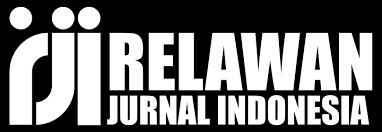Efek Interaksi Sosial Digital terhadap Impulsivitas Belanja Online pada Generasi Z
DOI:
https://doi.org/10.61722/jiem.v3i6.5098Keywords:
Impulsive Shopping, Generation Z, Digital Social Interaction, Social Media, Consumer BehaviorAbstract
The rapid growth of digital technology and social media has changed the way individuals interact and make decisions in shopping, especially among Generation Z who are very active in the online environment. This study aims to analyze the influence of digital social interactions on online shopping impulsivity in Generation Z. This study explores how exposure to digital peer influence, user-generated content, and social engagement through platforms such as Instagram, TikTok, and online forums drive unplanned shopping behavior. This study uses a quantitative approach with a survey of 30 Generation Z respondents aged 18–25 years who are active online shoppers and involved in digital social platforms. Data analysis was conducted using simple linear regression to test the relationship between digital social interactions and impulsive shopping tendencies. The results showed a significant positive relationship, where the higher the intensity of digital social interactions, the higher the level of impulsivity in online shopping. These findings indicate that digital social influences play an important role in shaping the consumption behavior of the younger generation. This study contributes to the development of literature in consumer psychology and digital behavior, as well as being the basis for formulating ethical digital marketing strategies and consumer education in the digital era.
References
Baumeister, R. F., Heatherton, T. F., & Tice, D. M. (1994). Losing control: How and why people fail at self-regulation. Academic Press.
Bandura, A. (1977). Social learning theory. Prentice-Hall.
Bloom, B. S., Krathwohl, D. R., & Masia, B. B. (1964). Taxonomy of educational objectives: The classification of educational goals. Handbook II: Affective domain. David McKay Company.
Huang, J. (2016). Media social usage and online impulse buying. Journal of Internet Commerce, 15(2), 150–169. https://doi.org/10.1080/15332861.2016.1143198
Kaplan, A. M., & Haenlein, M. (2010). Users of the world, unite! The challenges and opportunities of social media. Business Horizons, 53(1), 59–68. https://doi.org/10.1016/j.bushor.2009.09.003
Lim, X. J., Mohd Radzol, A. R., Cheah, J. H., & Wong, M. W. (2020). The impact of social media influencers on purchase intention and the mediation effect of customer attitude. Asian Journal of Business Research, 10(2), 65–84. https://doi.org/10.14707/ajbr.200079
Mehrabian, A., & Russell, J. A. (1974). An approach to environmental psychology. MIT Press.
Park, C., & Kim, Y. (2008). The effect of consumer knowledge on message processing of electronic word-of-mouth via online consumer reviews. Electronic Commerce Research and Applications, 7(4), 399–410. https://doi.org/10.1016/j.elerap.2007.12.001
Putri, R. N. (2021). Pengaruh aktivitas media sosial terhadap perilaku konsumsi remaja. Jurnal Psikologi Konsumen, 9(1), 25–37.
Rook, D. W., & Fisher, R. J. (1995). Normative influences on impulsive buying behavior. Journal of Consumer Research, 22(3), 305–313. https://doi.org/10.1086/209452
Solomon, M. R. (2013). Consumer behavior: Buying, having, and being (10th ed.). Pearson Education.
Susanti, A., & Widodo, A. (2022). Pengaruh interaksi digital dalam e-commerce terhadap kontrol diri dan perilaku konsumtif. Jurnal Manajemen Pemasaran, 16(2), 45–57.
Woolfolk, A. (2010). Educational psychology (11th ed.). Pearson Education.
Asosiasi Penyelenggara Jasa Internet Indonesia (APJII). (2023). Laporan survei internet APJII 2023. https://apjii.or.id
Downloads
Published
Issue
Section
License
Copyright (c) 2025 JURNAL ILMIAH EKONOMI DAN MANAJEMEN

This work is licensed under a Creative Commons Attribution-ShareAlike 4.0 International License.













